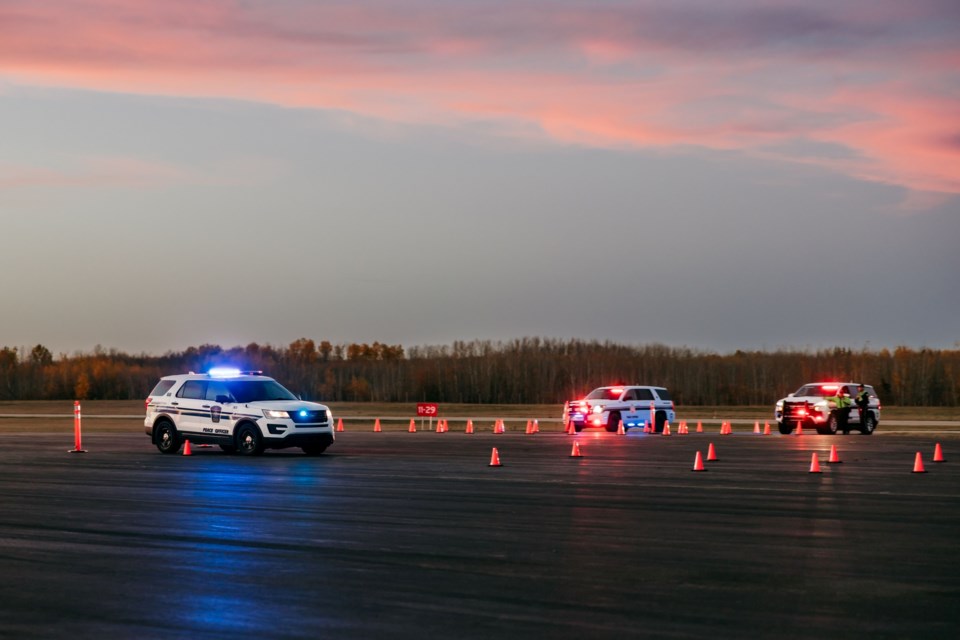LAC LA BICHE - People driving in the vicinity of the Lac La Biche Regional Airport in recent days may have noticed a lot of flashing lights that weren’t part of the illuminated runway.
The lights were from peace officer vehicles that were part of the large contingent of community peace officers and other law enforcement personnel training in a session of the Emergency Vehicle Operations Course (EVOC). The training, part of the hands-on class work offered through Lac La Biche County’s Law Enforcement Training Centre, took over the tarmac area at the seasonal air tanker base on the southwest corner of the Lac La Biche Airport.
Chris Clark, the enforcement centre’s director of training, said the participants in the latest class are primarily peace officers from Calgary along with members of other provincial peace officer agencies and fire services.
This latest training sessions started on November 18 and according to Clark, will be finished on Dec. 13. There are 70 participants taking the training. Clark says the training takes place from Monday to Friday each week and that a new group comes every Monday.
Driving, Clark said, is something these officers will do every day, and the specialized training offers them experience in emergency maneuvers and awareness.
“We want to make sure that they can get to the call and their respective duties safely,” he told Lakeland This Week. “The training teaches everything, but every component must be done safely.”
During the time they are in Lac La Biche, Clark explained, participants in the emergency driving training course are taught a variety of skills including the dynamics of a vehicle, steering, rapid acceleration, lane positioning to limit collisions and maintain escape routes, collision avoidance and emergency braking. Using their police radios while driving is also a component of the training.
“We also discuss legalities in driving and use of equipment pertaining to provincial laws and appropriate agency policies,” Clark stated.
The practical aspect of the training, he continued, teaches and demonstrates pivot and steering input points, and acceleration and braking are taught through different exercises.
In total, he added, participants will drive and be tested on nine different obstacles and exercises.“They will drive several obstacles in reverse as most collisions occur in reverse for emergency service personnel,” Clark said. “We also incorporate radio usage, use of lights and sirens and decision-making scenarios.”
The training takes place in daytime hours and at night.
While many peace officers and emergency services personnel come to Lac La Biche to receive EVOC training every year, Clark said 2024 will be the Law Enforcement Training Centre’s biggest EVOC delivery so far, with about 160 people going through the training this year.
Earlier this year, Lac La Biche County council approved $2.1 million for a new emergency road course training track that will be used for the EVOC course that will be located in the industrial park just west of the Lac La Biche hamlet.
The new facility will have a road surface almost double the size of the current training area and will also be operational throughout the year.
According to Clark, plans for a new track remain in the works, and local officials expect such an emergency vehicle training course to be up and running by next year.
“We are still working on developing our track space and anticipate it will be ready for late summer of 2025,” he said. “This will bring hundreds of students annually to Lac La Biche.”



